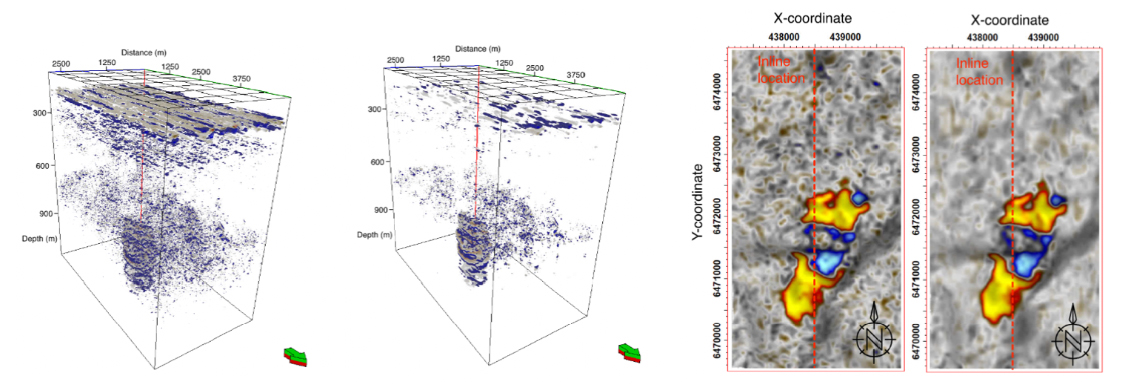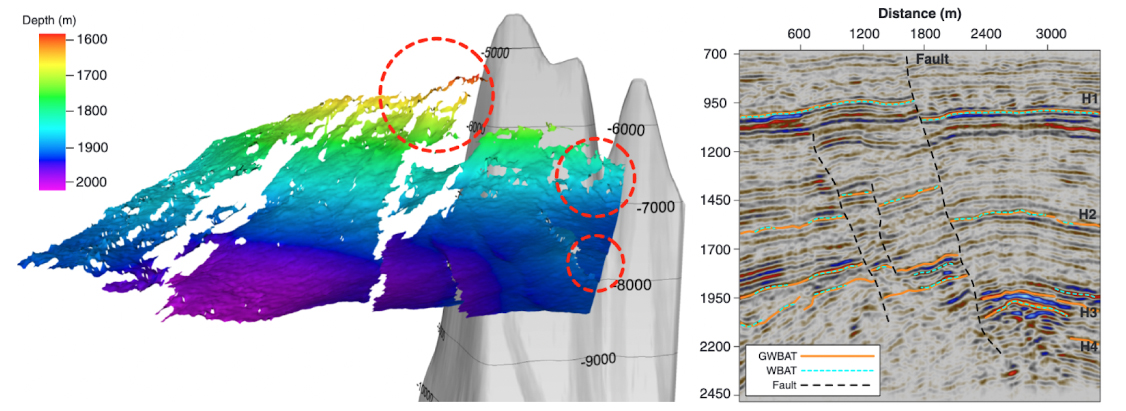-
[Repeatability enhancement of time-lapse seismic data]

In an ideal case, the time-lapse differences in 4-D seismic data should only reflect the changes of the subsurface geology. Practically, however, undesirable discrepancies are generated because of various reasons. Therefore, proper time-lapse processing techniques are required to improve the repeatability of time-lapse seismic data and to capture accurate seismic information to analyze target changes. In this study, we propose a machine learning-based time-lapse seismic data processing method improving repeatability. A training data construction method, training strategy and machine learning network architecture based on a convolutional autoencoder a reproposed. Uniform manifold approximation and projection are applied to the training and target data to analyze the features corresponding to each data point. When the feature distribution of the training data is different from the target data, we implement data augmentation to enhance the diversity of the training data. The method is verified through numerical experiments using both synthetic and field time-lapse seismic data, and the results are analyzed with several methods, including a comparison of repeatability metrics.
-
[Semi-auto horizon interpretation]

Horizon interpretation is a routine task for building reservoir models and accurately estimating hydrocarbon production volumes, it is a labour-intensive and protracted process. Hence, many scientists have worked to improve the horizon interpretation efficiency via auto-picking algorithms. Nevertheless, the implementation of a classic auto-tracking method becomes challenging when addressing reflections with weak and discontinuous signals, which are associated with complicated structures. As an alternative, we propose a workflow consisting of two steps: (1) the computation of strata histograms using transdimensional Markov-chain Monte Carlo and(2) horizon auto-tracking using waveform-based auto-tracking guided by those strata histograms. These strata histograms generate signals that are vertically sharper and more laterally continuous than original seismic signals; therefore, the proposed work-flow supports the propagation of waveform-based auto-picking without terminating against complicated geological structures. We demonstrate the performance of the novel horizon auto-tracking workflow through seismic data acquired from the Gulf of Mexico, and the Markov-chain Monte Carlo inversion results are validated using log data. The auto-tracked results show that the proposed method can successfully expand horizon seed points even though the seismic signal continuity is relatively low around salt diapirs and large-scale faults.
-
[ML-based porosity estimation]

Estimating porosity models via seismic data is challenging due to the low signal-to-noise ratio and insufficient resolution of the data. Although impedance inversion is often used in com-bination with well logs, to obtain sub-seismic scale porosity data, several problems must be addressed. Alternatively, we have proposed a machine learning-based workflow to convert seismic data into porosity models. A residual U-Net++ (ResU-Net++)-based workflow is designed to take multiple poststack seismic volumes with different frequency bands as input and estimate a corresponding porosity model as output. We mainly use experimental cases with simulated data. Therefore, scaling ResUNet++for real data is needed in future research, such as considering coherent noise in seismic data, allowing uncertainty in petrophysical parameters, and expanding the size of ResUNet++to the practical reservoir extent.